Beck's South Beach Showcase
Why Carson Beck went to Miami, why it might work, and how the 12-team playoff improves the chances for "showcase schools"
Before the College Football Season began last August, Carson Beck was the Heisman favorite, with the potential to go first overall in the 2025 NFL Draft. But when the games started, Beck and his Georgia Bulldogs struggled. Over a six-week stretch of SEC play, Beck threw 12 interceptions to 10 touchdowns, and Georgia lost twice. By the time Beck blew out his UCL in the SEC title game in December, ending his season, Georgia fans were convinced they wouldn’t even miss him when he left for the pros. Three weeks later, Beck declared for the NFL draft as expected.
But in early January, Beck shockingly doubled back and announced that he was entering the NCAA transfer portal. Not long after, Beck revealed his landing spot: the University of Miami.
Optically, Beck’s move to Miami looks like it’s for all the wrong reasons. Beck’s girlfriend, influencer, and college basketball player Hanna Cavinder - and her twin sister, Haley - play basketball at Miami. Combine that with the $4M in NIL money Beck received to join the Hurricanes, his growing reputation for living large, and all the other off-the-field aspects that come with swapping Athens for South Beach, and it sounds like a college football cautionary tale in the making.
But if you can put all the noise about Beck’s transfer to the side, on the field, it is a fascinating fit. Beck - who reportedly returned to college because his draft stock had tanked - has a chance to repair his image in the same offense that fueled former Miami QB Cam Ward’s breakout last season - which made him a Heisman contender and the likely #1 pick in the 2025 NFL draft.
Miami, for the second year running, gets the country's top quarterback transfer. That will help their College Football Playoff aspirations in the 2025-2026 season, but a successful year with Beck has the potential to do something even more powerful for the Hurricanes: establish them as the country’s best showcase school for NFL-bound quarterbacks, a valuable niche in a College Football landscape that increasingly rewards high-flying offenses.
Sunnier in South Beach
At the end of the 2023 college football season, after two strong years at Washington State, Cam Ward declared for the NFL draft. Not unlike Beck this offseason, Ward was told he was likely to go between rounds three and five. That would mean starting his career as a second- or third-string quarterback and working his way up the roster. While Ward believed he could do just that, he kept thinking about a transfer offer from Miami - in particular, he kept thinking about their offense.
Miami’s offensive coordinator, Shannon Dawson, traces his coaching lineage to Hal Mumme, one of the inventors of the Air Raid offense - widely considered the most aggressive and quarterback-friendly offensive scheme in College Football. What inspired Mumme and the late, great Mike Leach to architect the Air Raid was a fundamental belief that offenses weren’t passing nearly enough - leaving space, yardage, and ultimately points, on the table. The Air Raid scheme spreads the field with receivers and uses them to open up quick, rhythmic throws for their quarterbacks. The scheme has a history of highlighting the arm talent of high-upside quarterbacks while hiding some of their less polished qualities like working through reads and getting the ball out quickly: Patrick Mahomes thrived in Kliff Kingsbury’s Air Raid, as did Caleb Williams and Kyler Murray in Lincoln Riley’s interpretation.
Ward himself ran a version of the Air Raid at Washington State, and it boosted him from a relative unknown to a 3,700-yard passer and the top transfer option in the country. Miami’s pitch to Ward was to further improve his draft stock at a school with more visibility and better support at WR and across the O-Line, all while running a version of Dawson’s Air Raid tailored to Ward’s strengths (Dawson’s staff reportedly told Ward he would be given the “keys to the kingdom” if he joined). That offer - and the $2M package from Miami’s NIL collective - were enough to convince Ward to ditch the draft and head to Miami for the 2023-2024 season.
Ward’s decision paid off handsomely. He threw for 600 more yards and 14 more touchdowns while throwing fewer passes and the same number of interceptions as he had the year before. More important to evaluators than just piling up those stats, however, was how Ward did it, leveraging Dawson’s offense to show off his impressive arm talent - an attractive asset for NFL teams. Ward’s performance drove his draft grade from mid-to-late-rounder to the likely first-overall pick. Ward’s improved selection will also come with an improved contract - if he is selected first overall, Ward’s rookie deal will be worth around $40M. If you compare that to the $5M early third-round picks made in last year’s draft, Ward’s showcase season was worth $35M in future NFL cash alone, and that’s before you factor in the $2M NIL package Ward received from Miami.
Beck’s transfer to Miami comes under different circumstances than Ward’s. Rather than the talented but raw prospect that Ward was, Beck is a more refined passer who struggled to show his upside last season. Where Beck is coming from - a traditional power in Georgia, rather than a proving ground like Ward’s Washington State - also makes his move unique. But, what Beck will be hoping for in his time at Miami is exactly what Ward got in his: a season in Dawson’s Air Raid offense that highlights Beck’s NFL-caliber arm and vaults him back into the first round.
If last year was any indication, Beck may get just that. Last season, Dawson was a Broyles Award semi-finalist - the prize given to the best assistant in the country - largely for how he adapted his Air Raid to bring the best out of Ward. Dawson’s ability to tailor his Air Raid attack bodes well for, Beck, Miami’s ‘25-’26 CFP aspirations - and perhaps even the school’s prospects beyond next season.
The New Rules
Miami’s showcase-style acquisitions of Ward and Beck became possible after two NCAA rule changes prior to the 2021 season. The simultaneous introduction of the NCAA’s NIL policy and the single-use “free transfer” rule effectively created a free-agency-style market of existing college football players. What’s unique about the NCAA transfer portal compared to NFL free agency, however, is that while money and winning are certainly factors, the largest incentive for NFL-bound players is showcasing their skills to improve their draft stock and, ultimately, their longer and more lucrative NFL careers.
A strong option for a quarterback to showcase his skills are at the NCAA’s traditional powers, like Georgia, Texas, Alabama, Ohio State, and Michigan. The advantages of these schools for quarterbacks are the high visibility and strong supporting casts. C.J. Stroud, Bryce Young, Tua Tagovailoa, and J.J. McCarthy are all recent examples of quarterbacks who used strong performances at traditional schools to earn an early-first-round pick. There is, however, a catch - these traditional programs prefer bringing in blue-chip prospects from high school and developing them on the bench, sometimes for multiple seasons. Notable recent sitters include Tua Tagovailoa, Mac Jones, and Bryce Young, who all overlapped at Alabama; Arch Manning, who spent the last two seasons on the bench at Texas; and even Carson Beck, who waited three(!) seasons before taking over at Georgia. The sit-and-develop method is all about teaching young prospects how to work within the traditional power offenses, which tend to be more structured and risk-averse - a viable strategy for teams that usually have a significant talent advantage over their opponents.
Because of their preference to develop young players, as well as their more established offensive identities, the traditional powers haven’t been aggressive in pursuing elite transfers at quarterback.1 The schools that have - Miami, USC, Oregon, Washington, among others - fit a similar profile: schools outside the top tier of contenders willing to tolerate more risk in exchange for game-winning dynamism in their offenses.
While seeking these transfers demand flexibility and plenty of NIL money, the strategy also offers valuable advantages compared to the traditional sit-and-develop approach. It opens the pool of quarterback options to proven commodities across the NCAA, rather than each school’s current group of reserves, who likely haven’t played meaningful snaps since high school. Proven production is particularly valuable in quarterbacks because they contribute more to winning than any other position. By finding and installing the most dynamic options, showcase schools give themselves a chance to punch above their weight and compete with the more talented rosters of traditional powers.
Early trials of this approach yielded promising returns for the quarterbacks involved. Caleb Williams, Bo Nix, and Michael Penix Jr. were all quarterbacks who transferred to non-traditional NCAA powers (USC, Oregon, and Washington, respectively) post-rule changes. Nix and Penix each earned over $1M in NIL money at their showcase destinations - and Williams reportedly earned over $10M. All three performed well in their showcase offenses, getting each off the board by the 12th pick in the 2024 NFL draft. In turn, the trio signed lucrative contracts and got valuable opportunities to start in their rookie year. This group have taken advantage of those opportunities thus far, making it more likely they could earn the mega-deals reserved for the league’s best quarterbacks when they become extension-eligible.
On the school side of the showcase strategy, results are mixed. Penix Jr. won Washington a game in the CFP, but they were ultimately battered by a traditional power in Michigan (and their sit-and-develop quarterback, J.J. McCarthy) in the final. Williams and Nix both failed to get their teams to the CFP at all. The shortcomings of these teams also tended to rhyme, with generally strong performances marred by a “blowup game” or two in rivalry or conference title games. Ward's 2024 season with Miami was similar, with the volatility of his game showing its downside as stakes were raised and defenses tightened up. Ultimately, Ward’s Hurricanes had one bad loss too many to get into the CFP, and illustrate the downside to shaping your offensive around a “showcase style” passing game - it invites the variance that the traditional powers work to avoid with their structured, conservative approach.
As we move into year two of the 12-team college football playoff, however, there are signs that the “showcase school” strategy is becoming more viable. Two losses used to disqualify teams from the four-team playoff, but in this year’s expanded field, seven of the twelve teams had two losses, and Clemson had three. With more room for error, teams can pursue more high-risk, high-reward approaches rather than the traditionally conservative approach that was optimal in the four-team era.
We even saw how the new playoff could benefit the showcase strategy in the title game. While Notre Dame and Ohio State both qualify as traditional powers, each came into the game with transfer quarterbacks - Riley Leonard and Will Howard. Both quarterbacks transferred from proving grounds (Duke and Kansas State, respectively) to these traditional powers to compete for the CFP and raise their draft stock.
While Leonard operated as a low-variance “system” quarterback at Notre Dame, Howard and Ohio State's dynamic passing attack seemed to ride out the lows of the showcase approach on the way to the College Football Championship. Howard’s Ohio State had the previously fatal late-season blowup game in rivalry week against Michigan, where two costly interceptions led to a brutal 10-12 loss. But granted a mulligan by the expanded CFP, Ohio State got in as the eighth seed and averaged 38 points and 287 passing yards per game in their four-win run to the championship.
While Ohio State’s Championship run offers the possibility that the traditional powers might also begin exploiting the showcase strategy, it also gives Beck and Miami a proof of concept for next season. By giving Beck the keys to the offense, the Hurricanes not only give him a chance to rehabilitate his stock before the draft - but also give themselves the firepower to barnstorm next season’s CFP.
Yet, the implications of Beck’s upcoming season in South Beach don’t end with the 2025-2026 CFP. If Miami successfully boosts the draft stock of the country's top quarterback transfer for a second straight year, they’ll cement themselves as a premier destination for NFL-bound quarterback transfers going forward. The knock-on effects could be powerful - with the promise of strong quarterback play, top offensive linemen and wide receivers might flock to Miami to join the party. The added visibility of CFP contention could even convince talented defenders to consider the Hurricanes and help round them into an all-around great team. A strong 2025 with Beck, in other words, might turn Miami into a new kind of powerhouse, built from and for the new college football landscape.
Edited Excellently by Greta Gruber
Although, there are some exceptions. Quinn Ewers to Texas comes to mind, and apparently Alabama made a move for Carson Beck before he committed to Miami.

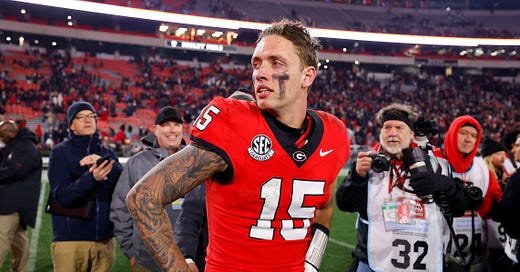



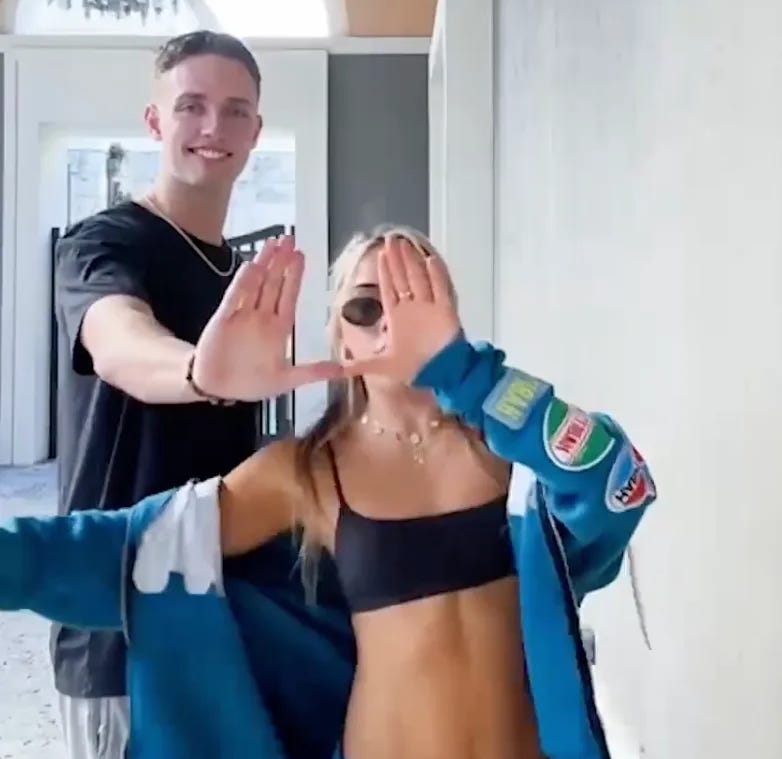
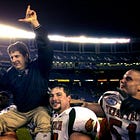
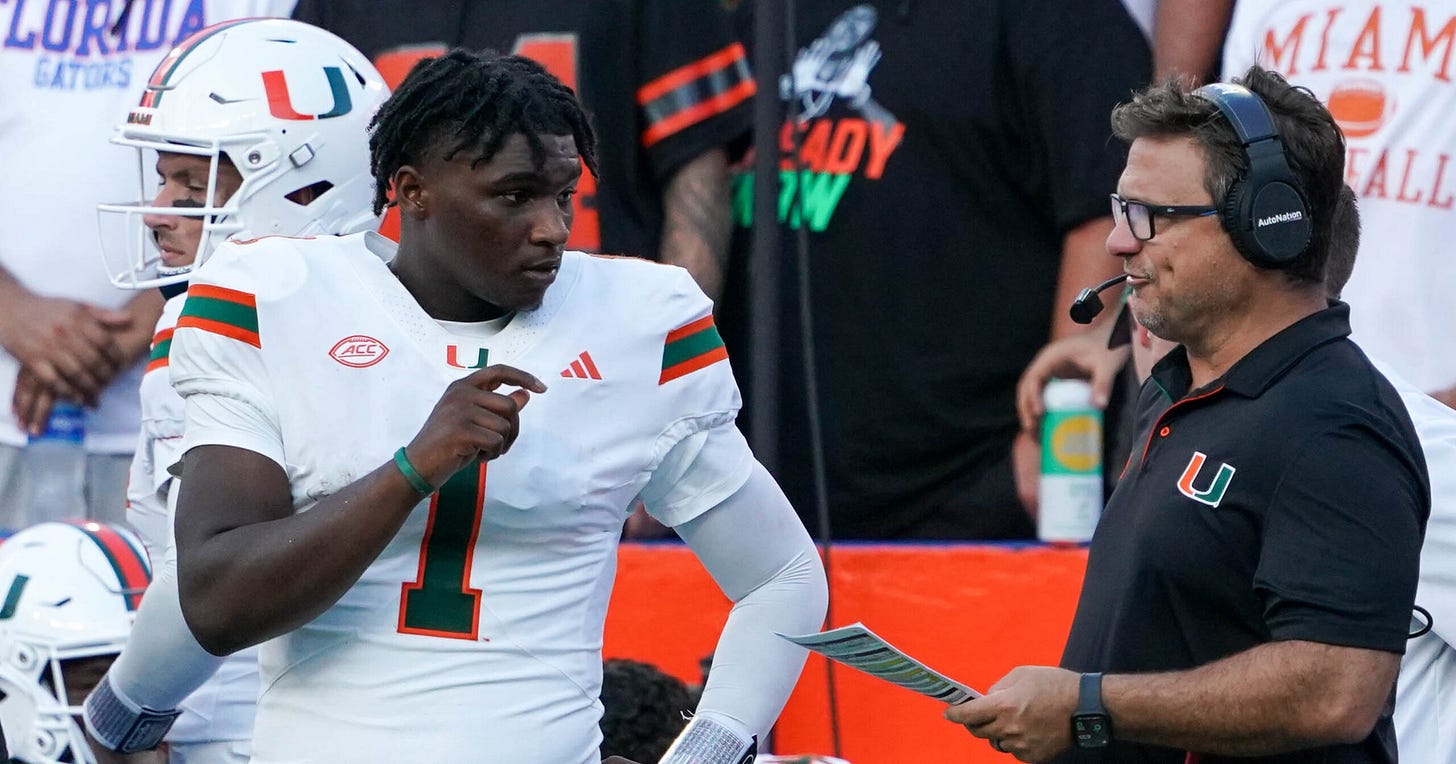

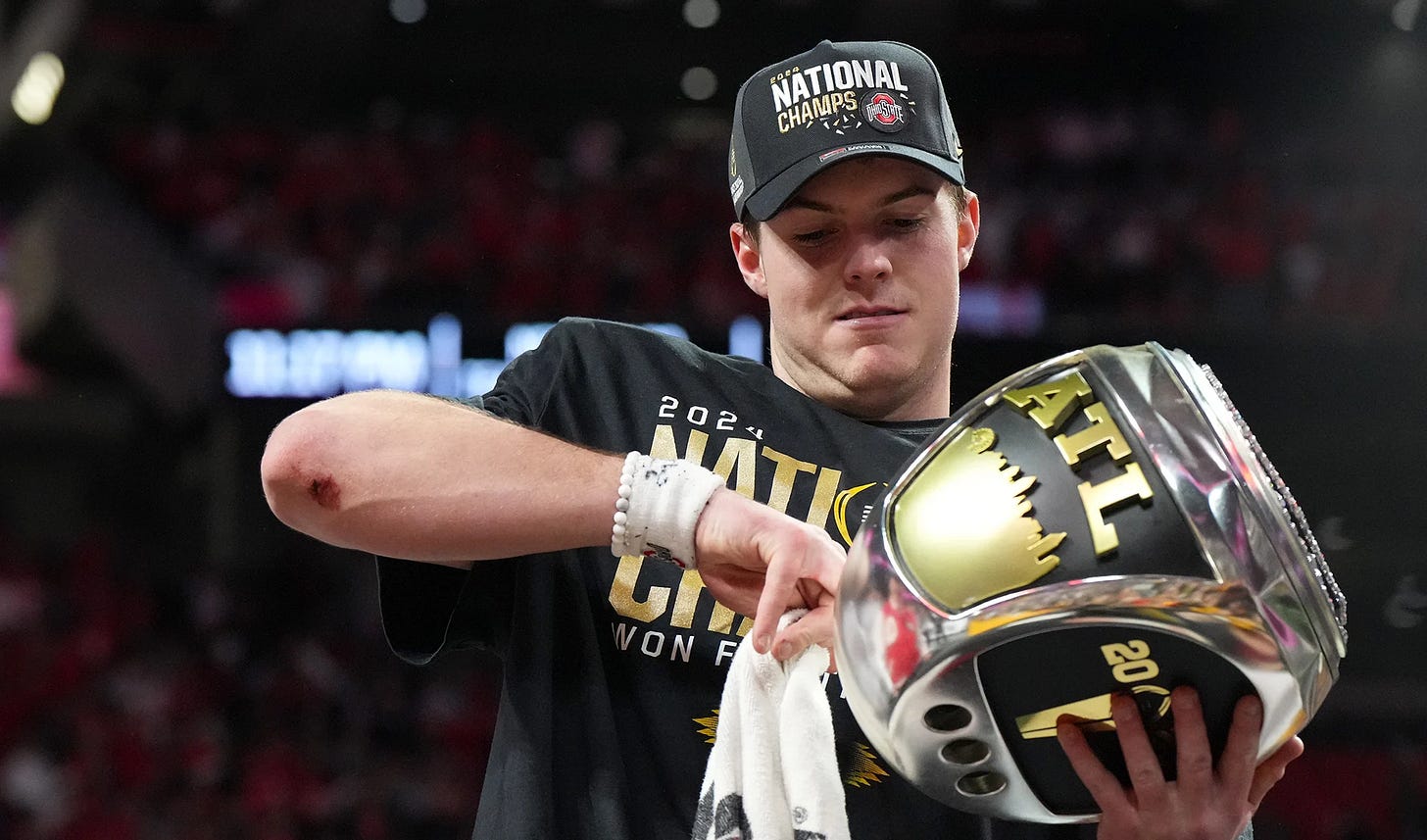
Don’t think I’d heard the term “showcase school” before — love that. Great as always Alex, thanks for your work!